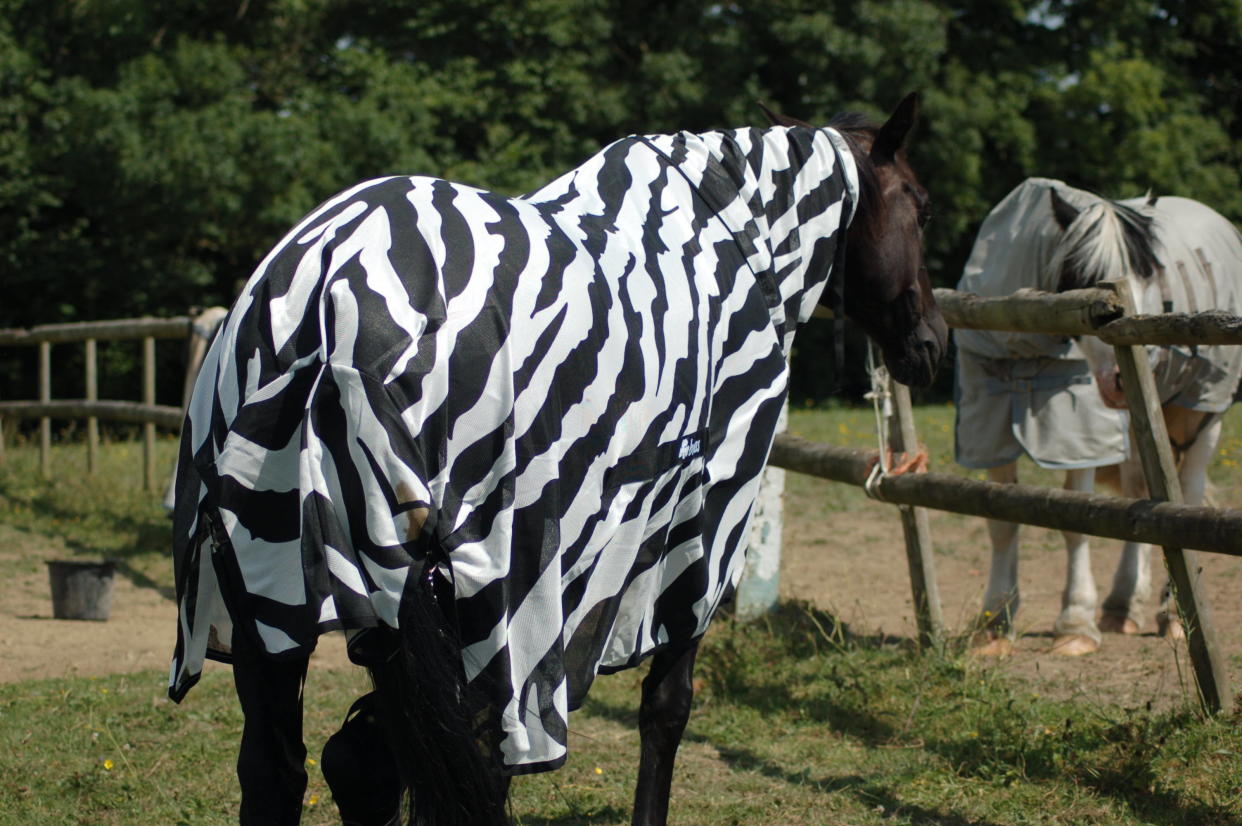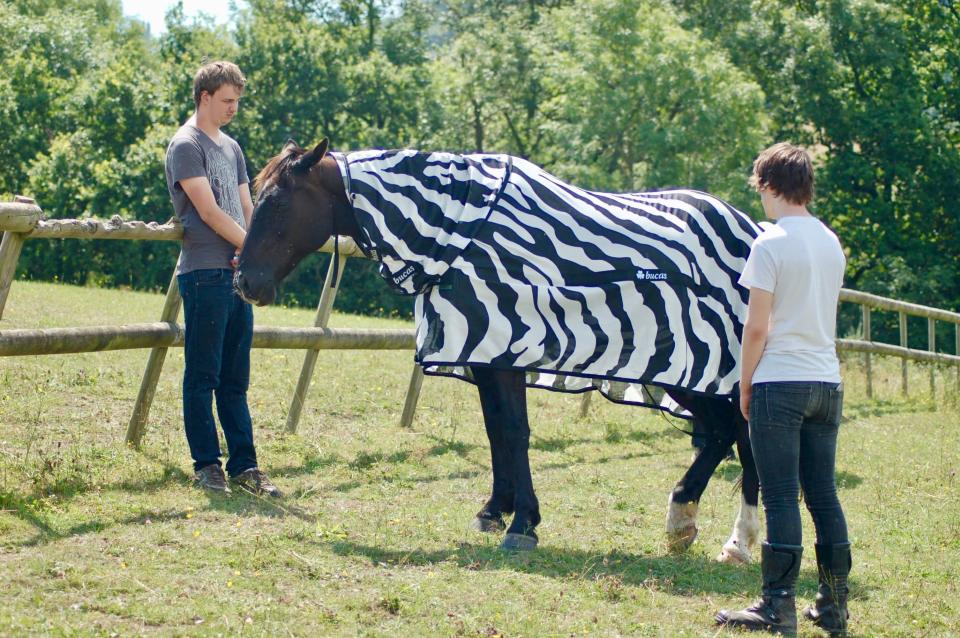Scientists have come up with another explanation for why zebras have stripes

It’s an age-old question, but scientists have come up with one reason for why zebras are stripy.
According to new research, zebra’s stripes might help protect them from attacks by bloody-sucking flies by dazzling them as they come in to land.
Scientists conducted an experiment on a UK horse farm in Somerset that involved zebras as well as horses dressed in black and white striped coats.
They found that horse flies gathered around domestic horses and zebras at a similar rate – but landed on zebras a quarter as often.

When horses were dressed in stripy “zebra coats” the flies made far fewer landings on the striped areas but were not kept away from the uncovered head, the research – reported in the journal Public Library of Science ONE – found.
Video footage showed that striped affected the way flies landed, with the confusing ‘landing strip’ forcing them to crash or abort landing altogether.
MORE: Gas hobs in your kitchen ‘to be banned within six years’ to meet emission targets
MORE: Impatient OAP ‘nudged’ pram off pedestrian crossing with her car
Study leader Professor Tim Caro, from the University of California at Davis, US, said: “Once they get close to the zebras… they tend to fly past or bump into them. This indicates that stripes may disrupt the flies’ abilities to have a controlled landing.”
Dr Martin How, a member of the team from the University of Bristol, said: “Stripes may dazzle the flies in some way once they are close enough to see them with their low-resolution eyes.”
Zebra’s stripes have given rise to a range of theories including camouflage, a way of confusing predators, a method of signalling other zebras, and a system of heat control.
More recent research has suggested that somehow the stripes reduce the chances of a zebra being bitten by flies.

 Yahoo News
Yahoo News 

